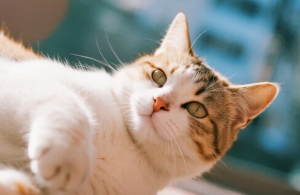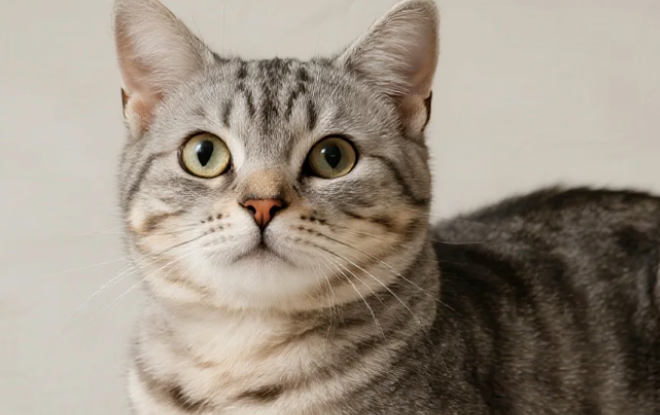Sometimes, I feel like cats hide their feelings in the fur between their whiskers. They don’t say “I love you,” but in their subtle actions, they hand you the answer again and again. Today, as a pet professional and a seasoned cat owner, I want to teach you how to read these signals: by the end of this article, you’ll know exactly whether your cat has feelings for you.
-
Let’s Start with the Conclusion: A Cat’s Love is “Companionship Driven by a Sense of Safety”
Cats are not the type to openly declare their love. They aren’t clingy, yet they’re always nearby; they don’t make a lot of noise, yet they quietly follow you. True love for a cat means bringing you into their “safe zone,” using your scent as the backdrop of their “home.” To judge if a cat has affection for you, don’t just look at the attention they give you—observe how relaxed they are when they’re near you.
-
Slow Blinking: They See You as Their Safe Zone
Between cats, slow blinking is a sign of “I trust you.” If your cat slowly closes their eyes while you’re looking at them, then gently opens them again, it’s a low-risk, non-aggressive signal. You can return the slow blink with the same rhythm, slow your breathing, and soften your voice. Many readers have told me that this small gesture feels like “syncing heartbeats”—one blink is all it takes to close the distance.
-
Tail Tells the Truth: The Question Mark Tail and Tail-Wrapping Around Your Legs
An upright tail with a slight bend at the tip forming a question mark is a warm greeting; when the tail gently circles your legs, it’s like saying “I’m inviting you into my scent circle.” Some cats will even rest their tail against your body for a second—this is them marking you with their scent, like a stamp: “You’re mine.”
-
Head Butting and Face Rubbing: It’s Not Possession, It’s Intimacy
Cats have scent glands on their cheeks and forehead. When they head-butt or rub their face against you, they’re performing a “social marking.” Many people misunderstand this as a territorial act, but it’s more about “bringing you into our circle.” If your cat chooses to rub against the back of your hand or near your brow, it means they’re actively creating a “closeness channel” with you.

-
Kneading and Purring: Relaxed, But Pay Attention
Kneading is commonly seen when a cat is relaxed and content, often a self-soothing behavior carried over from kittenhood. Purring typically indicates comfort, but it can also occur when the cat is nervous or in pain. The key to judgment is the “overall picture”: Is their body relaxed? Are their whiskers spread or flattened? Is the purring even or erratic? True affection comes with a soft body and steady breathing within the purring.
-
Tummy Up and Side Lying: Trust Doesn’t Always Mean They Want You to Touch
When a cat shows you their belly, it’s a sign of deep trust and security. However, many cats don’t enjoy having their belly rubbed, and sudden attempts to pet them there can result in a “lightning-fast scratch.” A safer approach is to pet their head, behind their ears, and under their chin, then gently move along their back, observing their ear position, tail, and breathing rhythm. If they shift their belly closer to your hand, that’s a signal you can continue.
-
Sleeping Next to You: Sleep Positions and Locations Reveal Their Feelings
A cat that likes you will choose to sleep close to you, often in a spot where they can see the door. They might sleep by your feet, near your keyboard, or on a small mat by the bathroom door. It’s not indifference—it’s “guarding.” If they sleep deeply with their throat exposed and limbs stretched out, it shows they have completely dropped their guard in your space.
-
Sharing “Loot”: Clumsy but Genuine Love
When your cat brings you a small insect, toy, or even a crumpled piece of paper, they’re sharing their discovery with their “family.” Please don’t scold them for being “dirty.” You can gently praise them, then replace the “gift” with a toy and quietly dispose of it. This kind of behavior shows that they are becoming more confident in expressing affection.
-
Emotional Resonance: They’re “Reading Your Face”
Studies show that cats can recognize changes in a person’s tone of voice, expression, and body posture. When you’re feeling down, they are more likely to stay nearby, rubbing against you, circling your feet, or lightly touching your hand. This is “social referencing.” A calm voice and slow petting will help them associate you with “safety.”
A Few Misunderstood Signals.Sudden Bites: This is usually a “too much petting” reminder. Break the interaction into shorter sessions, with gentle strokes of three to five times per session, leaving a little “unfinished kindness.”Tail Flicking Quickly: This doesn’t mean happiness; it’s a sign of irritation. Stop, and give them space.Nighttime Frenzies: This is normal energy release and has nothing to do with affection. Increase daytime playtime to help them feel more settled at night.Watching You from Afar: Shy cats express their affection with “watching but not approaching.”They’ll follow you to the room, staying in a place where they can see you quietly. Don’t rush in, let them come to you on their own.A cat’s love is not like fireworks; it’s like a nightlight. It’s not dazzling, but it’s always there. I’ve witnessed many farewells, but I’ve also witnessed many reunions. In the end, what remains is never just a “meow,” but a quiet trust: they nap beside you while you read a book, no words exchanged, yet both of you understand each other’s feelings.If you’re willing, start slowing down, softening your touch, and being more patient. You’ll realize that cats were never indifferent—they just love you with a different kind of gentleness. And the moment you learn to understand these signals, you’ll learn how to love better.





